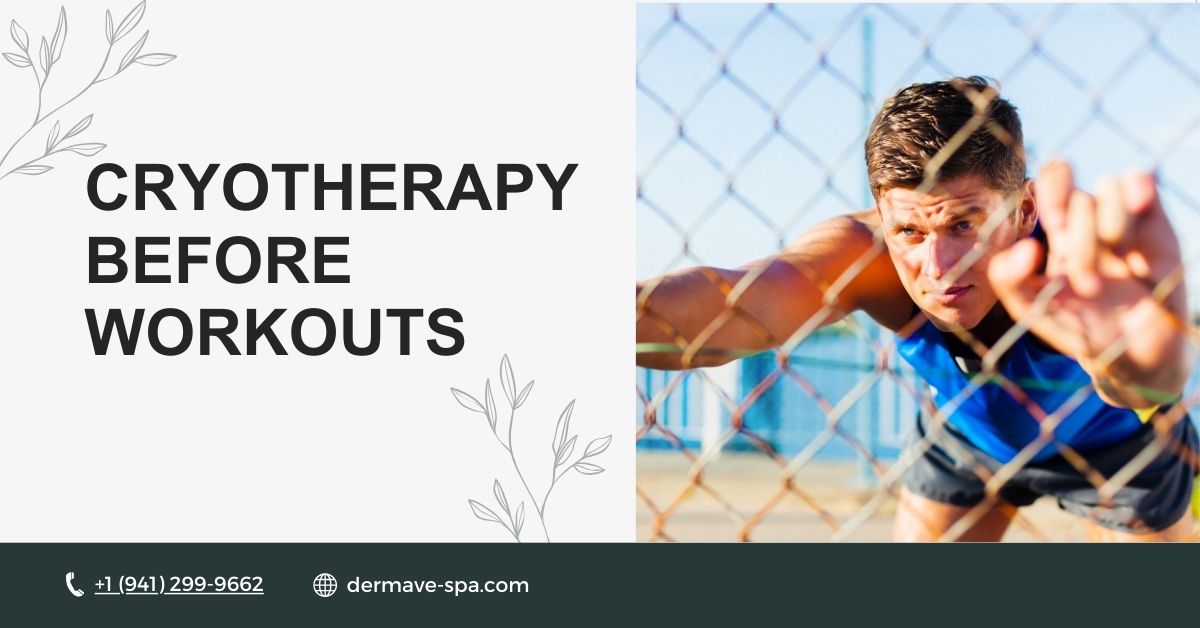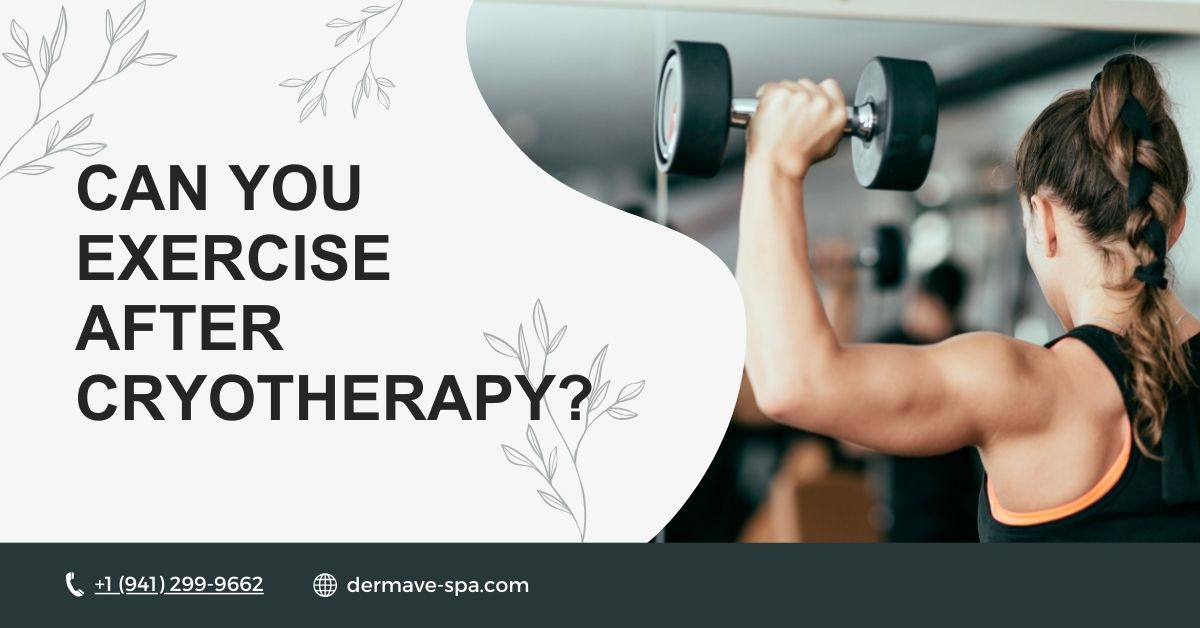Cryotherapy has emerged as a popular recovery method among athletes and fitness enthusiasts. This therapy involves exposing the body to extremely low temperatures, aiming to reduce inflammation, enhance recovery, and alleviate muscle soreness.
Given its growing prevalence in sports medicine, many wonder whether they can exercise immediately following a cryotherapy session. Understanding the effects of cryotherapy on the body’s systems can help individuals make informed decisions about their workout routines post-treatment.
Can I Exercise Immediately After a Session?
The question of whether to exercise immediately after cryotherapy is nuanced. While some athletes may feel invigorated and ready to jump into their workout, others may need to consider their body’s reaction to the therapy.
Cryotherapy treatments, particularly whole body cryotherapy, can enhance muscle recovery and improve energy levels. This is especially critical if undergoing cryotherapy while pregnant, as it could pose additional risks. However, it’s essential to ensure that the body has adequately adjusted to the temperature change before engaging in vigorous exercise.
Pre-Workout
Using cryotherapy before a workout can be beneficial for athletes looking to enhance their performance. A cryotherapy session may help cool the muscles and reduce inflammation, allowing for a more effective exercise session. By decreasing muscle soreness and improving blood flow, athletes can experience a boost in endurance and energy levels. However, it’s critical to follow a proper protocol and monitor how the body feels post-therapy to avoid any adverse reactions during the workout.
Post-Workout
After completing a workout, many athletes opt for cryotherapy to support their recovery process. Utilizing cryotherapy post-workout can significantly reduce muscle soreness and inflammation, making it an essential component of recovery protocols in sports and exercise. The cooling effects of the therapy can help the body recover more efficiently from strains and injuries.
By incorporating cryo freeze sessions into your post-workout routine, you can enhance recovery and prepare your body for future workouts. Research by Cochrane and systematic reviews conducted by Bleakley and Saliba emphasize the positive effects of cryotherapy on recovery, highlighting its role in enhancing the overall athletic experience.
Is Cryotherapy Better Before or After a Workout?
The debate on whether cryotherapy is more beneficial before or after a workout hinges largely on individual goals and body reactions. For athletes aiming to enhance performance, a cryotherapy session prior to exercising can be advantageous, as it may increase energy levels and improve blood flow. Conversely, utilizing cryotherapy after a workout is often favored for its ability to reduce inflammation and muscle soreness, aiding in recovery.
Ultimately, the decision should be based on personal preferences, the specific sport, and how one’s body reacts to the cold therapy, ensuring a tailored approach to maximize the positive effects.
Cryotherapy Before Workouts

Employing cryotherapy before a workout can serve as a powerful tool for athletes seeking to enhance their physical performance. The cooling effects of cryotherapy can stimulate the body, potentially increasing alertness and energy levels. By reducing muscle soreness and inflammation, athletes may experience improved endurance during their workout sessions.
Furthermore, this form of therapy may aid in better muscle control and coordination, essential for peak athletic performance. However, it is crucial to tailor the cryotherapy treatment to individual needs and track the body’s response to ensure safety and effectiveness during physical exertion.
Pros
The advantages of using cryotherapy before a workout are numerous. One of the primary benefits is the potential to decrease muscle soreness, which can lead to a more productive exercise session. By improving blood flow and cooling the muscles, athletes often find they are more energized and ready to tackle their routines.
Additionally, cryotherapy may enhance metabolic processes, allowing for a quicker warm-up and better muscle function. Research has shown that a cryotherapy session can also positively impact an athlete’s mental state, boosting focus and motivation right before engaging in intense physical activity.
Cons
Despite the benefits, there are some drawbacks to consider when using cryotherapy before workouts. Some athletes may experience an adverse reaction to the cold exposure, such as temporary numbness or discomfort. Additionally, if the body does not adequately adjust to the extreme temperature, it could lead to decreased muscle control or injury during exercise.
There is also a risk of over-relying on cryotherapy as a warm-up method, which may detract from traditional warm-up routines that effectively prepare the body for rigorous activity. Therefore, athletes must ensure they follow a proper guideline to mitigate any potential risks associated with pre-workout cryotherapy treatments.
Cryotherapy After Workouts
Cryotherapy after workouts has gained popularity as a recovery method. It involves exposing the body to extremely low temperatures for a few minutes. This cold therapy helps reduce muscle soreness and inflammation by constricting blood vessels and decreasing metabolic activity. Once the body warms up, circulation improves, promoting faster healing. Many athletes find cryotherapy to be an effective way to enhance recovery, allowing them to train harder and reduce downtime between intense sessions.
Pros
Utilizing cryotherapy after workouts offers numerous benefits that support athletes in their recovery process. One of the primary advantages of post-workout cryotherapy is its ability to significantly reduce muscle soreness and inflammation. By exposing the body to cold temperatures, blood flow is redirected, which aids in the removal of metabolic waste products accumulated during exercise.
This process not only enhances recovery time but also helps to prevent injuries by allowing muscles to repair more efficiently. Many athletes find that regular cryotherapy sessions lead to improved endurance and energy levels in subsequent workouts, effectively enhancing their overall athletic performance.
Cons
While there are many positive effects associated with cryotherapy after workouts, some drawbacks must also be considered. Athletes may experience adverse reactions if they are not accustomed to the therapy, such as discomfort or increased muscle stiffness following exposure to extreme cold. Additionally, the use of cryotherapy immediately after exercising could potentially impede the natural inflammatory process, which is essential for muscle repair and growth.
Moreover, relying solely on cryotherapy as a recovery method may lead to neglecting other vital components of recovery, such as nutrition and hydration. It is crucial for athletes to follow a comprehensive recovery protocol that includes various strategies alongside cryotherapy to ensure optimal results.
Should Athletes Return to Activity After Cryotherapy?
The question of whether athletes should return to activity immediately after cryotherapy is complex and depends on individual circumstances. While some athletes may feel revitalized and ready to jump back into their routine, others might require a period of adjustment following the temperature shift. It is essential for athletes to listen to their bodies and assess how they feel post-session before engaging in further exercise.
While cryotherapy is often used to freeze skin cancer with cryotherapy, its application in sports aims to reduce inflammation and pain. Research indicates that many athletes benefit from a brief recovery period after cryotherapy, allowing their muscles to regain normal temperature and blood flow. This approach can help maximize the positive effects of cryotherapy while minimizing the risk of strain or injury during subsequent workouts.

